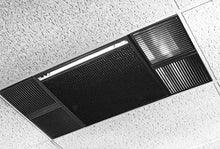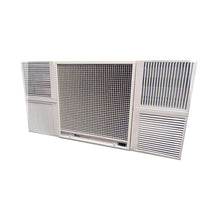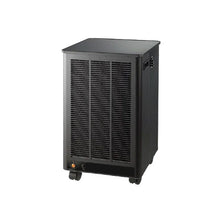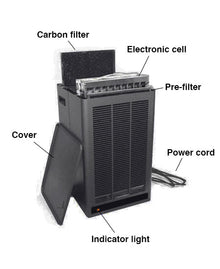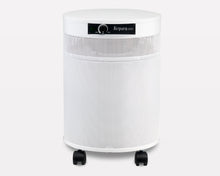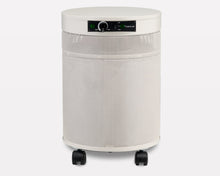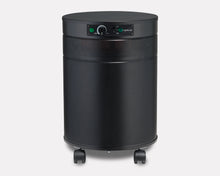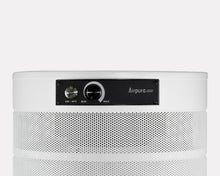Navigating the Haze: What's Really in Vaping Aerosols and How Air Purifiers Can Help

The subtle, sweet-smelling clouds of vapor that fill a room might seem harmless, but for many homeowners and businesses, the lingering haze is a growing concern. The rise in popularity of electronic cigarettes and other vaping devices has introduced a new air quality challenge. If you've ever walked into a room where someone has been vaping, you might have wondered: what exactly is in that vapor? Is it just water vapor, as some believe, or are there other, more concerning substances floating around? And if so, what can you do about it?
At Commercial Air Purifiers, LLC, we understand these questions are about more than just a nuisance—they’re about health and peace of mind. As a company dedicated to delivering the highest quality North American-made air purification systems, we've seen firsthand how airborne contaminants can affect indoor environments. In this article, we’ll explore the true composition of vaping aerosols, detail the potential health implications, and explain how a high-quality air purifier can be a powerful tool for cleaning the air you and your loved ones breathe.
Vaping Aerosol vs. Smoke: Understanding the Composition
A common misconception is that vaping produces "water vapor." The reality is far more complex. Unlike smoke from a traditional cigarette, which is the product of combustion, vaping devices heat a liquid (e-liquid) to produce an aerosol. This aerosol is a mixture of fine particles and gasses, not simple water vapor. Its primary components are propylene glycol and vegetable glycerin, which create the dense, visible cloud. However, it’s what's mixed into this base that causes concern.
Peer-reviewed studies have highlighted a cocktail of other substances found in these aerosols. Research published in the journal Environmental Science & Technology by researchers at Lawrence Berkeley National Laboratory found a range of hazardous chemicals, including formaldehyde, acetaldehyde, and acrolein, particularly when devices are operated at high voltage. These compounds are known irritants and potential carcinogens. The study also noted the presence of volatile organic compounds (VOCs) and ultrafine particles.
Another critical study from the New England Journal of Medicine in 2019 identified vitamin E acetate as a significant contributor to lung injury in some users, linking it to a major outbreak of a mysterious lung illness. While manufacturers have largely stopped using this additive, it underscores the potential for new, unstudied chemicals to enter the market and cause harm.
The key takeaway is that vaping aerosols are not a single substance. They are a complex mixture of fine, particulate matter and chemical compounds. When we at Commercial Air Purifiers, LLC talk about indoor air quality, we focus on the entire spectrum of contaminants, and vaping aerosols certainly fall into this category. The particles are a major concern because their small size allows them to be inhaled deep into the lungs.
The Invisible Threat: Ultrafine Particles and Your Health
The most significant danger from vaping aerosols, especially in enclosed spaces, comes from the ultrafine particles they release. These particles are incredibly small, often less than 2.5 micrometers in diameter (PM2.5), and can even be as small as 0.1 micrometers. To put that in perspective, a human hair is about 70 micrometers in diameter. The small size of these particles is what makes them so dangerous. They can bypass the body’s natural defense mechanisms and penetrate deep into the respiratory system, even entering the bloodstream.
A 2018 study in the journal Nicotine & Tobacco Research looked at secondhand exposure to e-cigarette aerosols and found that PM2.5 levels in indoor air could increase significantly when someone was vaping. This means that non-users, including children, pets, and roommates, are also being exposed. Long-term exposure to PM2.5 has been linked to a variety of health issues, including respiratory problems, cardiovascular disease, and other chronic conditions. While the health effects of long-term secondhand vape exposure are still being studied, the established risks of ultrafine particulate matter in general should be a cause for concern.
Beyond the particles, the VOCs released from vaping aerosols can contribute to poor indoor air quality. These gasses can cause eye, nose, and throat irritation, headaches, and nausea. Given that many people vape indoors, these particles and chemicals can linger in the air long after the visible cloud has dissipated, settling on surfaces and potentially being re-aerosolized into the air. This phenomenon is a serious consideration for anyone concerned with maintaining a clean indoor environment, whether in a home, office, or commercial space.
The Air Purification Solution: How CFM is Your Key to Clean Air
When facing a challenge like vaping aerosols, the right air purification system is the most effective solution. We at Commercial Air Purifiers, LLC believe in providing powerful, reliable products that deliver real results. The key to capturing these ultrafine particles is not just any air purifier, but one with a robust filtration system and a high CFM (Cubic Feet per Minute) rating.
Many people are familiar with CADR (Clean Air Delivery Rate), but we believe CFM is a far more useful and transparent metric. While CADR measures the rate at which an air purifier can remove a specific pollutant in a specific lab setting, CFM measures the actual volume of air the unit processes in a minute. This is the true measure of an air purifier's power and its ability to completely replace the air in a room. For an air purifier to effectively remove vaping particles, it must move a significant volume of air through its filters repeatedly. We recommend aiming for at least four to six air changes per hour for optimal air quality improvement. You can use our CFM calculator to determine the right size unit for your specific space: https://commercialairpurifiers.net/pages/cfm-calculator.
The multi-stage filtration system of our units is specifically designed to tackle the complex nature of vaping aerosols. The first line of defense is a pre-filter, which captures larger particles and extends the life of the subsequent filters. The main work is done by the medical-grade HEPA filter. High-quality HEPA filters are rigorously tested to capture at least 99.97% of particles as small as 0.3 microns, which includes the majority of particulate matter in vaping aerosols. To address the chemical contaminants and VOCs, a high-capacity activated carbon filter is essential. The carbon’s porous surface absorbs and traps gas molecules, effectively neutralizing the chemical odors and harmful VOCs that a HEPA filter alone cannot capture.
The combination of a powerful fan (high CFM) and a comprehensive multi-stage filter system is what makes a Commercial Air Purifiers, LLC unit so effective. We don't just clear the haze; we actively remove the dangerous, invisible particles and chemicals from the air, providing a genuine solution.
Taking Action: Choosing the Right Air Purifier for Your Needs
Selecting the right air purifier can feel overwhelming, but it doesn't have to be. As we’ve established, the focus should be on performance, not price. Our North American-made units are built to last and are backed by a satisfaction guarantee because we are confident in their quality and performance. When considering an air purifier for a space where vaping occurs, keep the following in mind:
First, calculate the required CFM for your space. Don't fall for underpowered units. An air purifier that is too small for a room will have to work overtime and will never truly clean the air. Our CFM calculator makes this step easy and ensures you get the right product for your needs.
Second, ensure the unit has a multi-stage filtration system that includes a true HEPA filter and a substantial amount of activated carbon. Some cheaper units may use a simple carbon mesh or thin carbon layer, which will quickly become saturated and lose effectiveness. For a continuous challenge like vaping aerosols, you need a deep bed of activated carbon to effectively adsorb the chemicals.
Third, look for a unit with a quiet but powerful fan. A high-CFM unit that is too loud will likely be turned off, defeating the purpose. Our units are designed to operate efficiently and quietly, so they can be run continuously without disruption.
In summary, the lingering clouds from vaping are more than just an aesthetic issue. They are a source of fine particulate matter and harmful chemicals that can negatively impact indoor air quality and, consequently, your health. By understanding the true composition of vaping aerosols and the science behind air purification, you can take a proactive approach to protecting your environment. A high-quality air purifier from Commercial Air Purifiers, LLC, with a high CFM rating and a comprehensive filtration system, is not just a luxury—it’s a necessary investment in clean, healthy air for everyone who shares your space.
Frequently Asked Questions
Can opening a window clear out vaping aerosols?
While opening a window can help to some extent by introducing fresh air, it is not a complete solution. It may disperse some of the particles and gasses, but it doesn't actively remove them. Furthermore, if you live in an area with high outdoor pollution, you may be inviting other contaminants in. An air purifier provides a controlled and continuous method of cleaning the air without compromising indoor comfort or security.
Do scented or flavored vaping products create different air quality issues?
Yes. The flavorings and scents are created by additional chemical compounds. These compounds often vaporize and become part of the aerosol, adding more VOCs and other chemicals to the indoor air. The same principles of air purification apply, and a robust carbon filter is even more critical for these types of aerosols.
How often should I replace the filters in my air purifier?
The frequency of filter replacement depends on how often you use the unit and the level of contaminants in the air. In an environment with frequent vaping, you will likely need to replace your filters more often than in a cleaner setting. We recommend checking the filters regularly and following the manufacturer's guidelines. Our systems are designed for easy filter replacement, ensuring you can maintain optimal performance at all times.
By: Commercial Air Purifiers, LLC.
Sources:
-
Lawrence Berkeley National Laboratory. (2018). New Study Finds Hazardous Chemicals in E-Cigarette Vapor. Retrieved from https://newscenter.lbl.gov/2018/02/07/new-study-finds-hazardous-chemicals-in-e-cigarette-vapor/
-
Banks, M. E., & Dutra, L. M. (2018). Secondhand aerosol exposure in indoor environments from e-cigarettes. Nicotine & Tobacco Research, 20(8), 922–929. https://doi.org/10.1093/ntr/ntx281
-
Layden, J. E., et al. (2019). Pulmonary Illness Related to E-Cigarette Use in Illinois and Wisconsin — Final Report. New England Journal of Medicine, 382(10), 903–916. https://doi.org/10.1056/NEJMoa1911614

